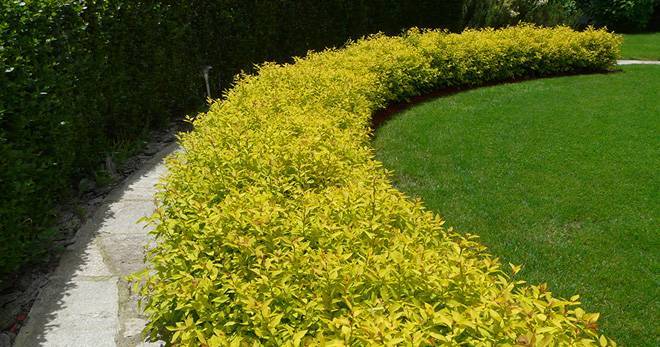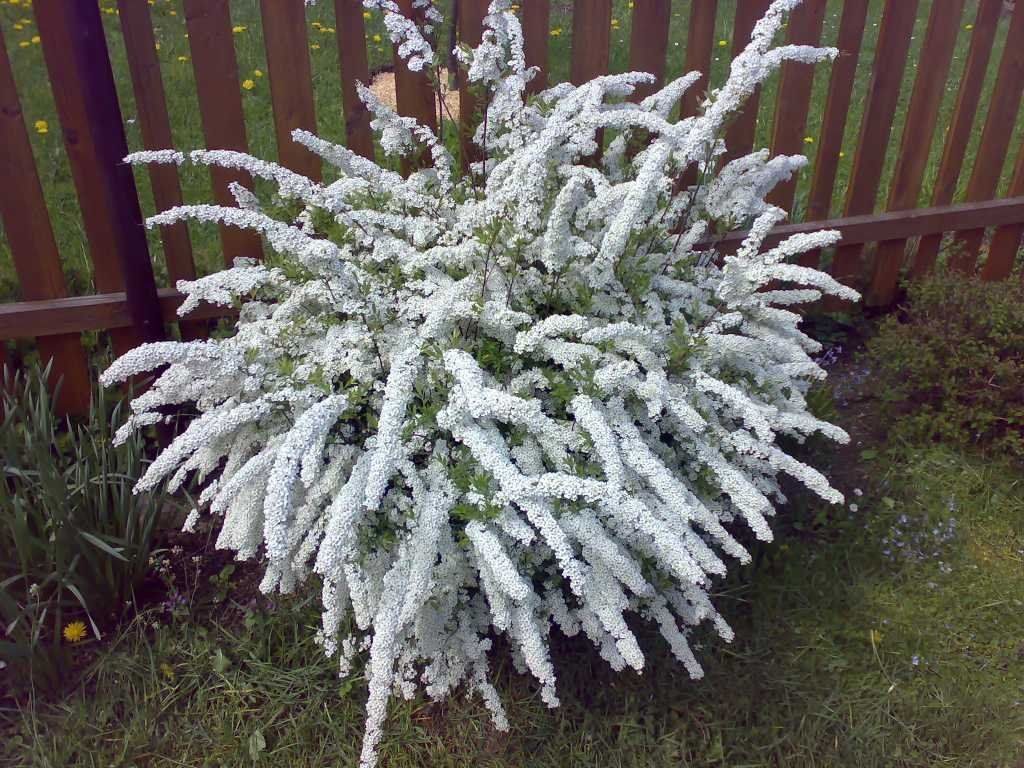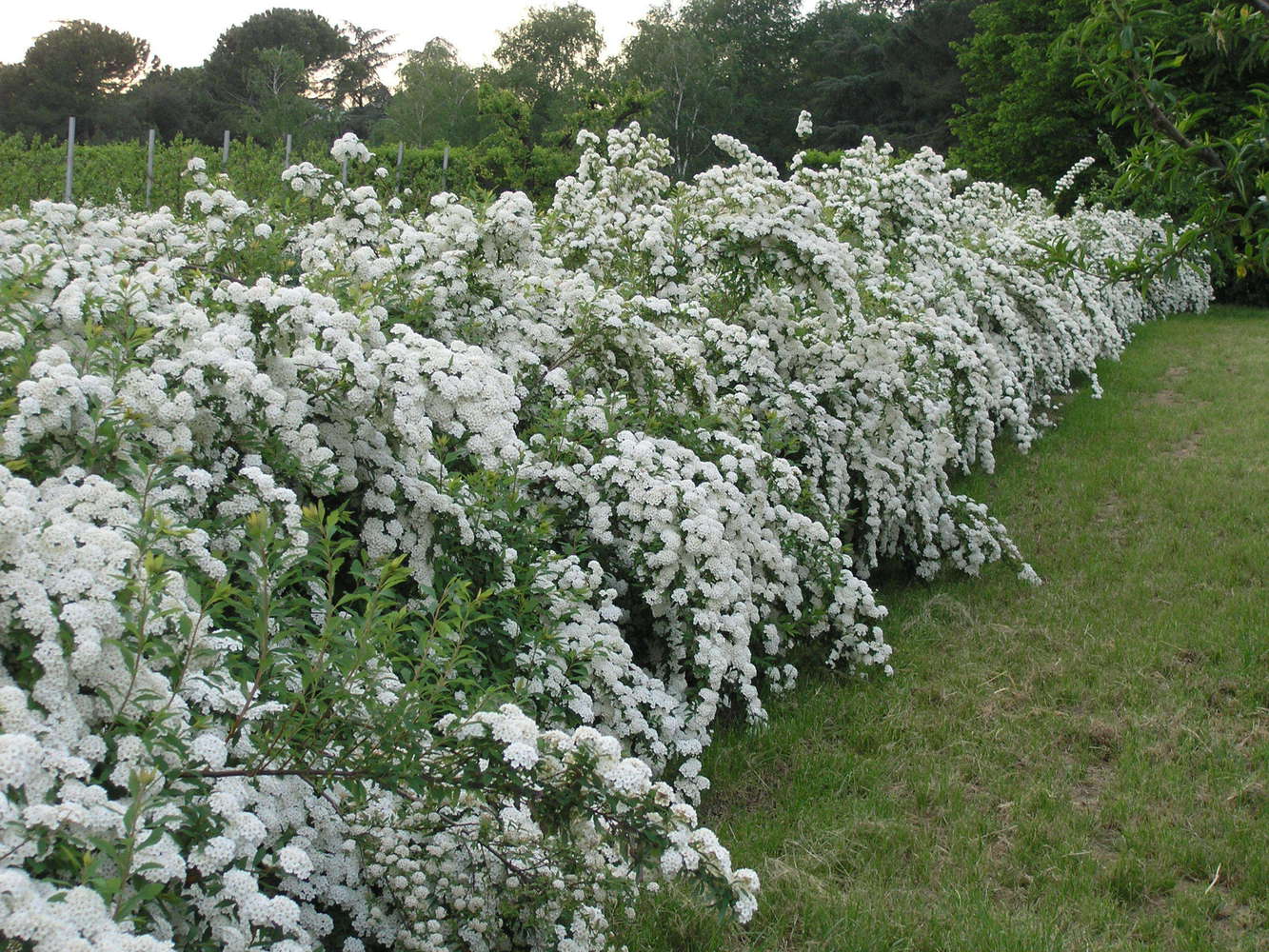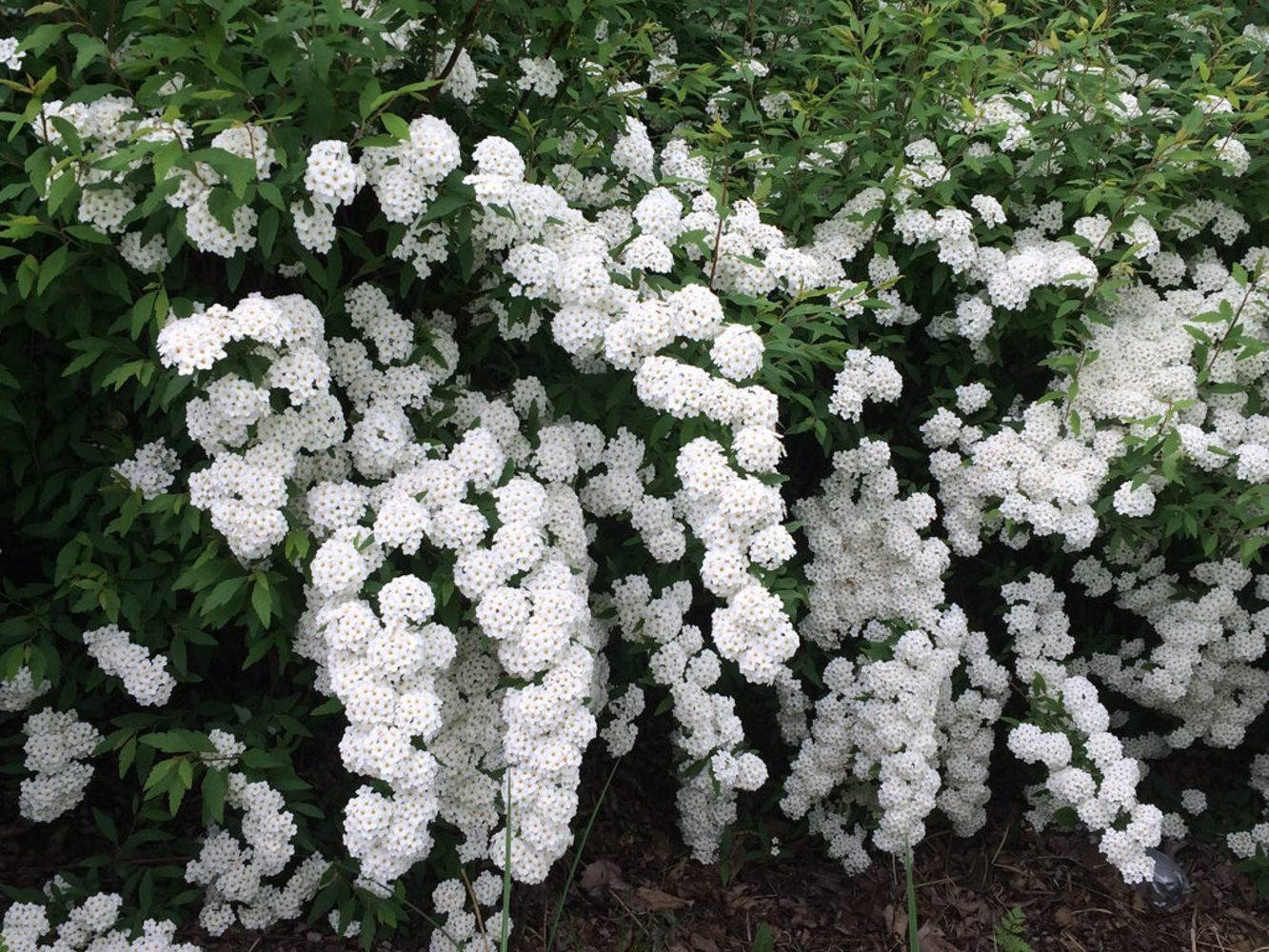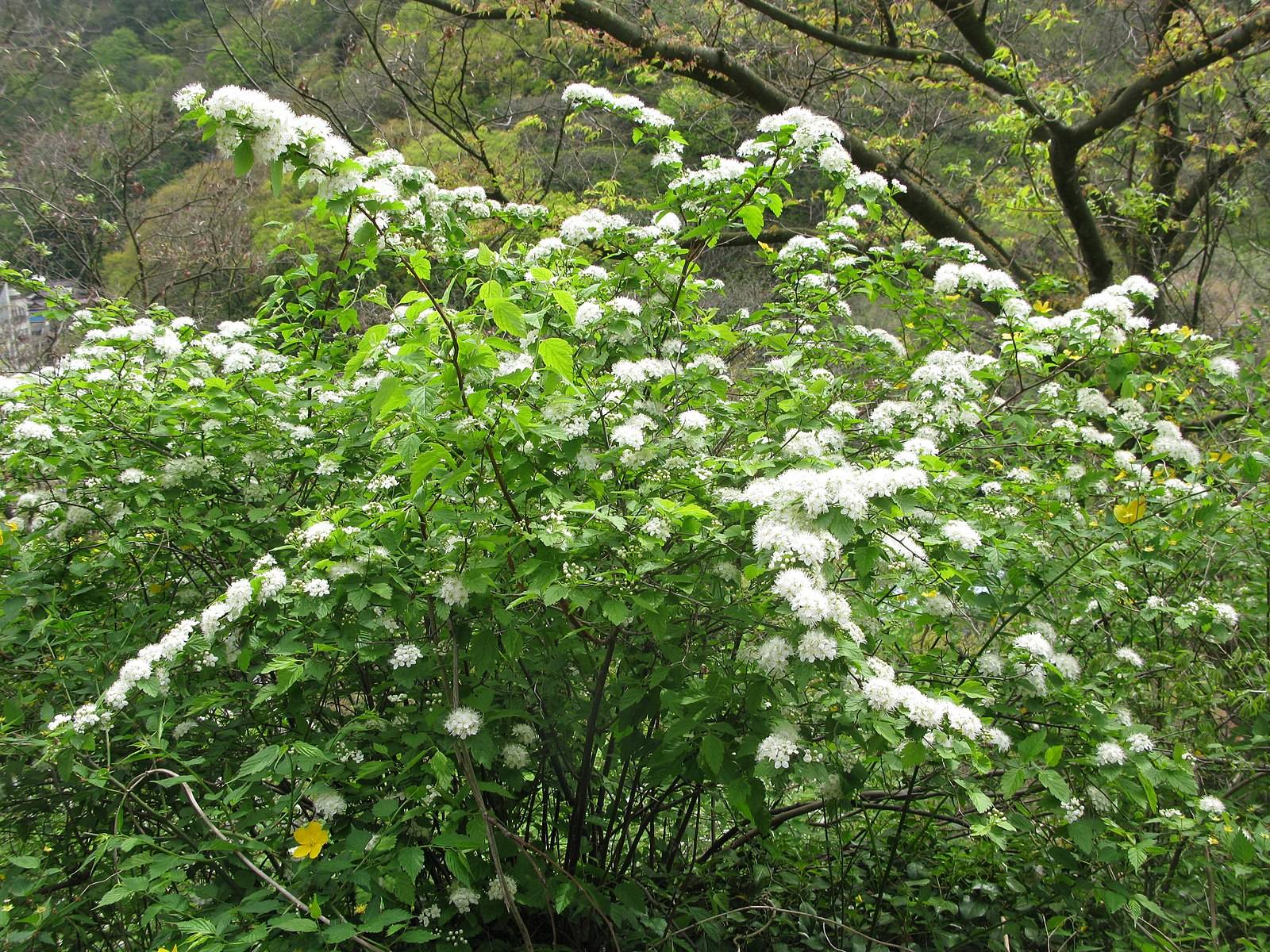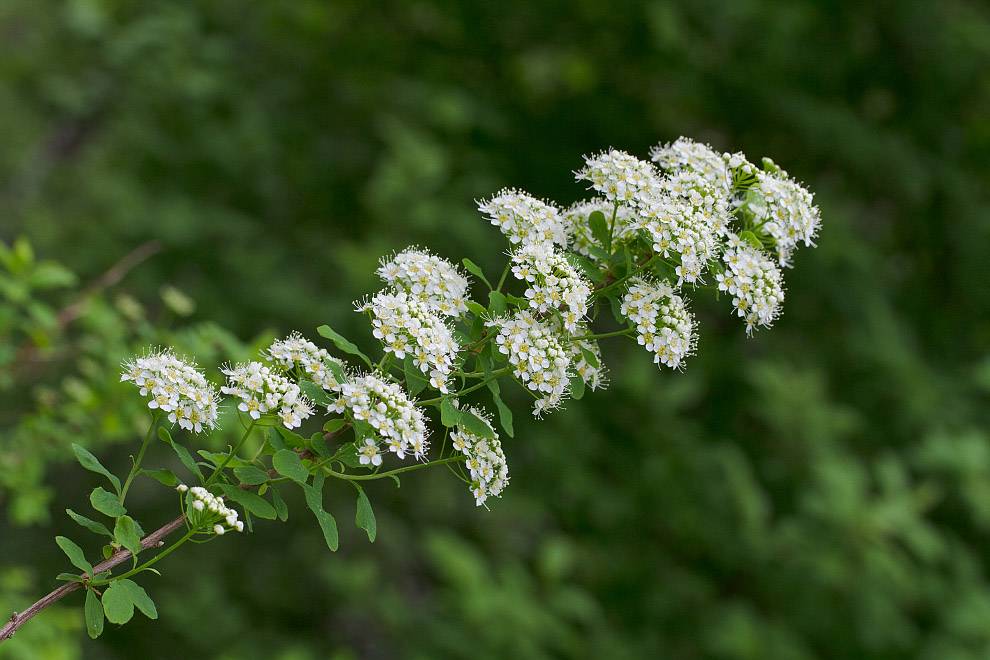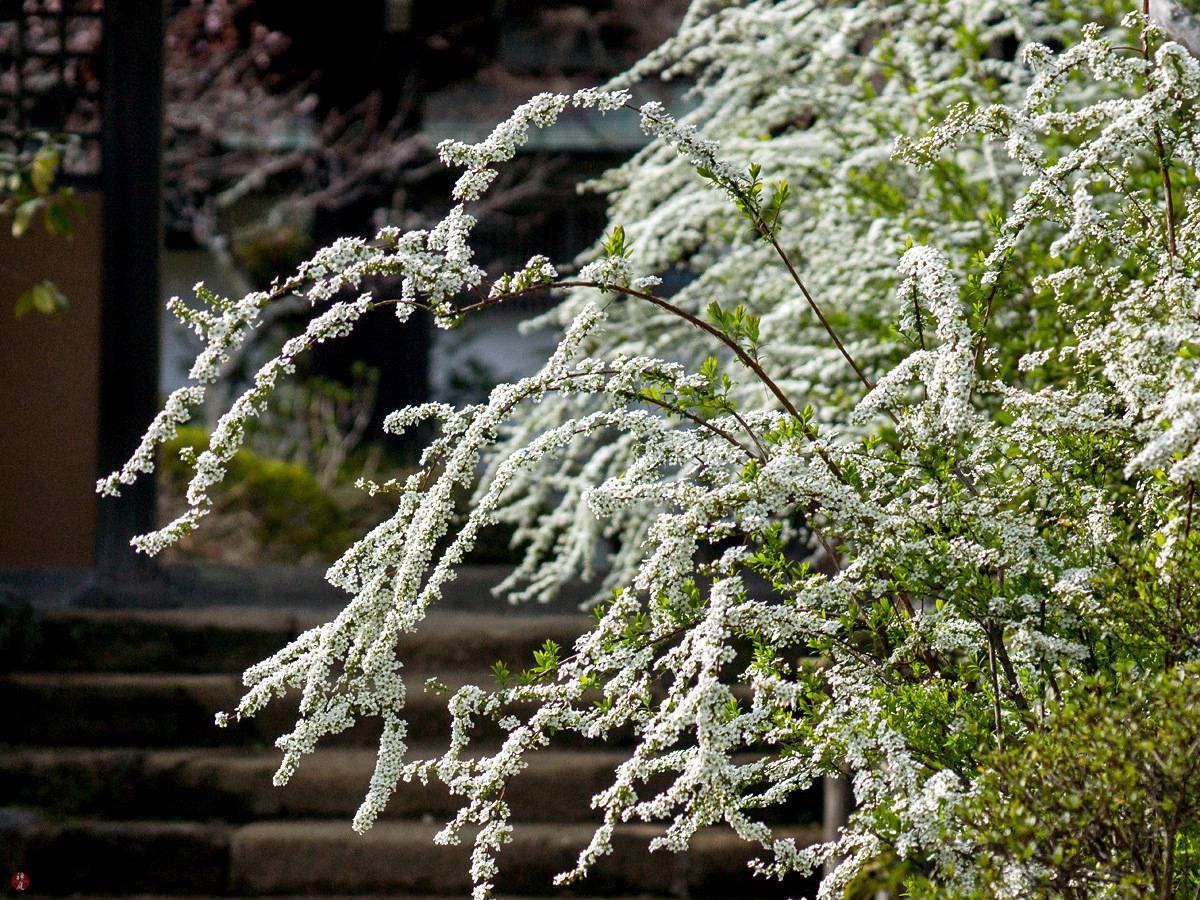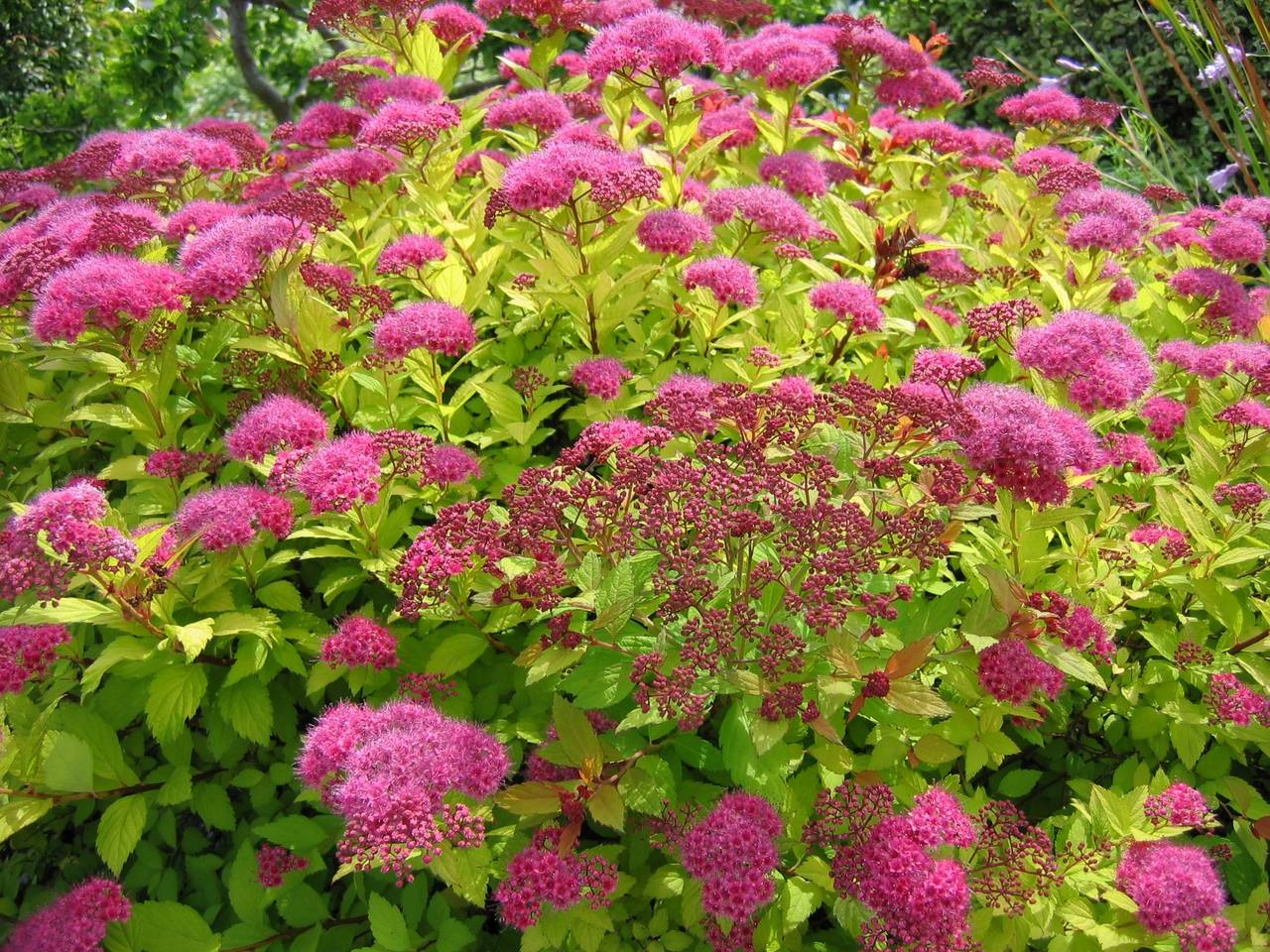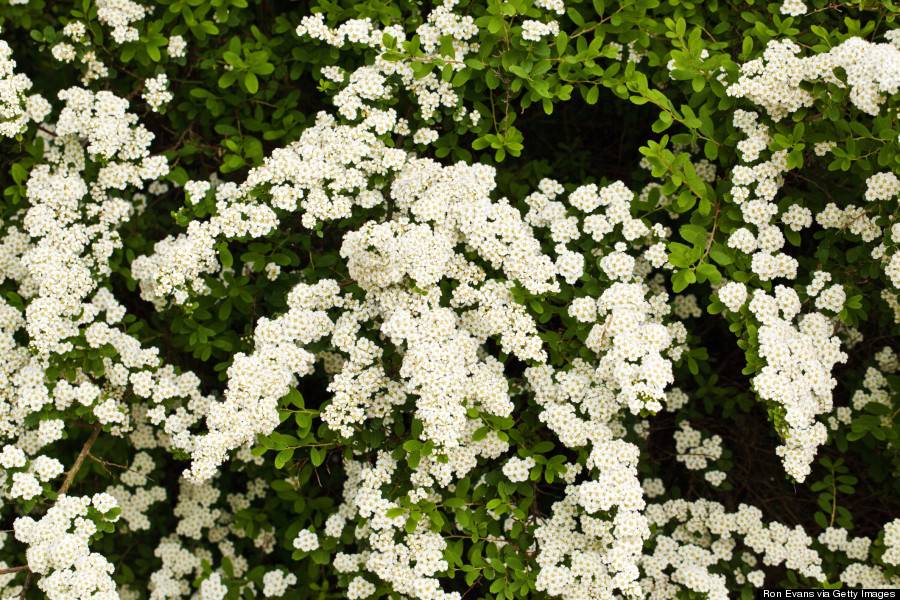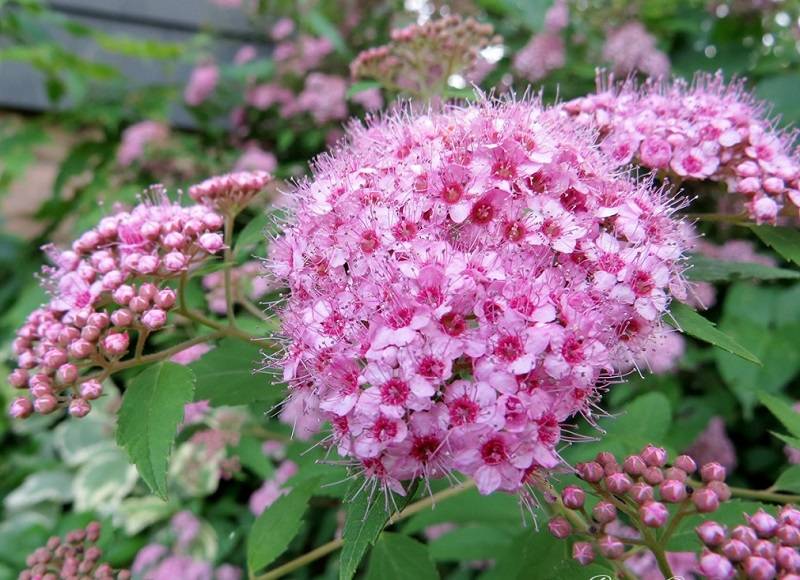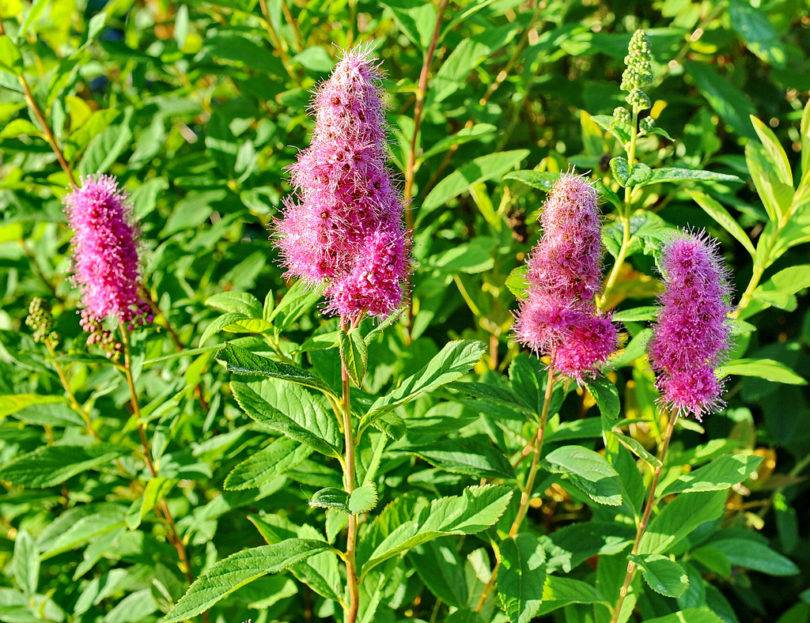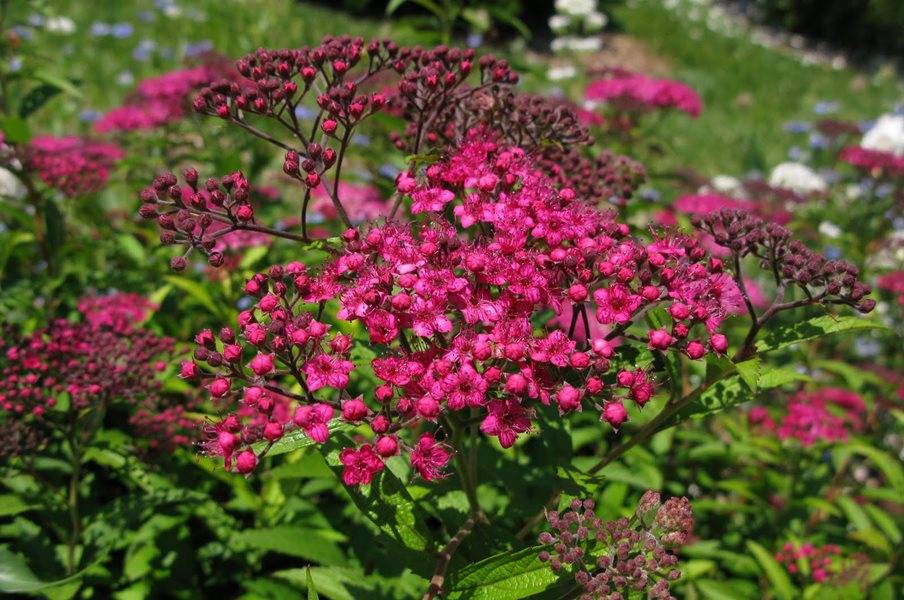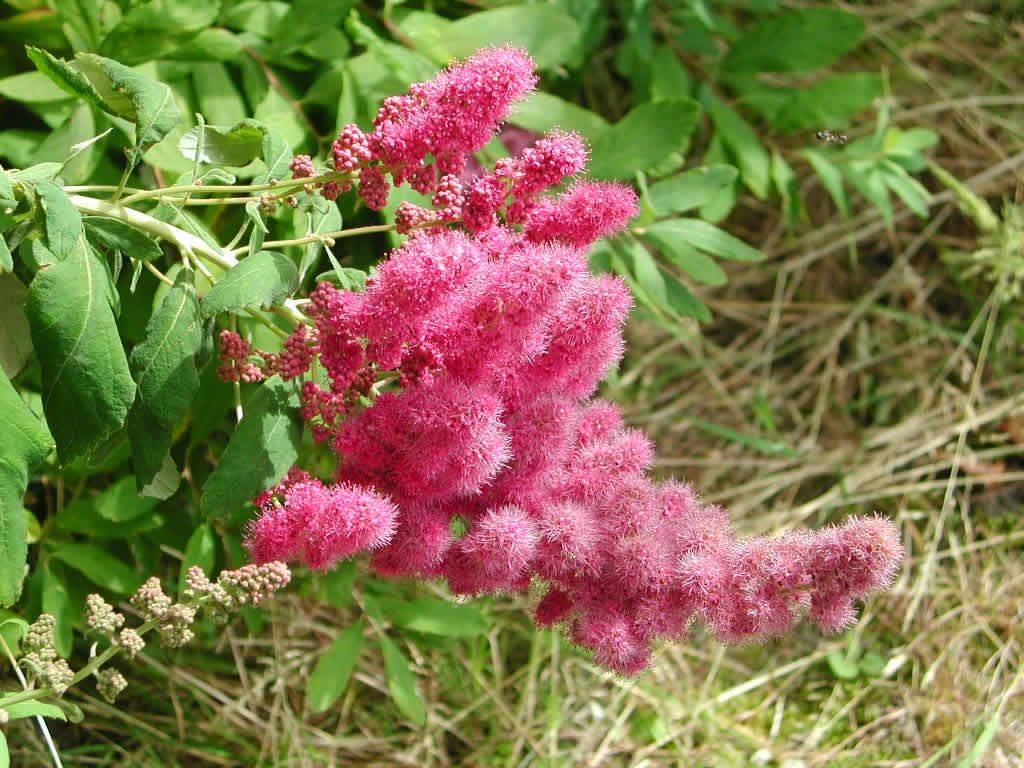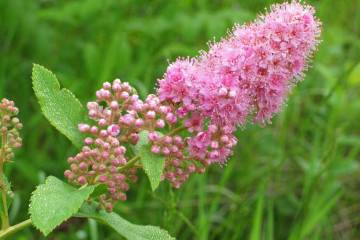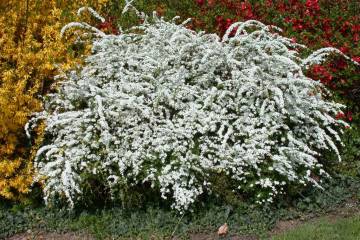Spirea (Spiraea) - species and varieties with white and pink flowers
Content:
A perennial ornamental shrub - spirea or, as it is also called, meadowsweet - is known everywhere in our country. The most common white-flowered varieties, but the newest seedlings with other shades of inflorescences - beige, pink, purple, appear regularly on sale.
Spirea - species and varieties
The belonging of the spirea to a particular species and variety affects not only the appearance of the crown and flowers, but also the duration of the flowering season, as well as the requirements for soil composition, care, pruning.
The origin and species diversity of spirits
The deciduous shrub of spiraea (Latin Spiraea) belongs to the Pink family (Latin Rosaceae). Translated from the Greek, "spir" is "spiral". It is her that drooping branches of a plant resemble. Natural forms are common throughout the Northern Hemisphere, and in South America - in Mexico.
All currently known types of spirits are conventionally divided into three groups:
- Blooming in spring. Inflorescences are corymbose or umbellate with rosettes of leaflets at the base. The flowering season is no longer than 3-4 weeks, but it is very abundant, foliage is almost invisible under the flowers.
- Blooming in summer. Inflorescence - a scutellum, simple or complex, is formed at the end of a short twig with leaves on the shoots of the current year. The season lasts almost all summer.
- Late flowering (second half of summer). An elliptical or broadly pyramidal panicle grows at the end of a long shoot with this year's leaves. The number of flowers is significantly less than that of other species, and the inflorescences replace each other as they wilt.
General description of the shrub
The shrub can grow, depending on the species, from 15 cm to 2.5 m in height. The root system of all types is fibrous with a shallow horizontal bedding. Shoots are erect, spreading or creeping. The bark is flaky, usually brown or gray in color. Young branches are green or reddish-brownish, glabrous, but sometimes pubescent.
Small buds can sometimes reach 1 cm in length. They are located on the branches singly or in pairs. The alternate leaves do not have stipules, are round or lanceolate-linear with 3-5 lobes, they are double-serrate-toothed. Inflorescences in the form of paniculate brushes or scutes consist of numerous flowers with 5 petals up to 2 cm in diameter each. Fruits (capsules with very small seeds) ripen within 2-2.5 months after pollination.
How to choose a variety of spirea
Varieties are selected based on the preferred climatic zone, flowering duration and crown habit. You can choose bushes with spring or summer flowering, different shades of petals, as well as undersized or tall spreading ones.
Recommendations for growing in different climatic zones
In the southern regions, all varieties and varieties can be planted without restrictions. At the same time, no measures are required to prepare for wintering.In the middle lane, preference is given to spring-flowering varieties, characterized by increased frost resistance and also without shelter.
Types of spirea white or spring flowering
Almost all spirea bushes blooming in spring have white inflorescences. Meanwhile, their external variety is quite large, for which unpretentious culture is highly appreciated by landscape designers.
Gray
The height of the bush, which resembles a fountain during flowering, is on average about 90-180 cm. The shoots are drooping, arched. The lanceolate leaves are gray-green on the face, and lighter on the inside. Numerous white corymbose inflorescences bloom along the entire length of the shoots from mid-May to mid-June. Winter hardiness - up to -35 ° С.
Arguta
It is a hybrid of Thunberg spirea and multiflorous. The bush, up to 3 m wide, consists of numerous shoots up to 2 m long. Narrow serrated green leaves up to 4 cm long. Flowering lasts 4 weeks from the last decade of May. Umbrella white inflorescences are formed only on last year's branches.
Wangutta
A dense-flowered hybrid of Cantonese and three-lobed spire. Rounded bushes grow up to 2 m in height. Arcuate branches droop strongly. An obovate leaf, up to 3.5 cm long, has 3-5 lobes, is painted in a dark green tint, and becomes orange-red in autumn. Hemispherical snow-white inflorescences bloom along all shoots in May.
Gorodchaty
It has been grown in gardens since 1800, but today it belongs to rare species. A bush up to 1 m high has a loose crown. The leaf is gray-green up to 3.5 cm in length, oblong, rounded. The edge of the leaf plate is crenate with three pronounced veins on the seamy side. The shade of the petals is slightly yellowish. The diameter of the rims is up to 5 mm. Inflorescence - corymbose from 10-20 buds.
Dubravkolistnaya
Spiraea oak-leaved is a shrub 1.5-2 m high. The crown is rounded with ribbed shoots. White corymbose inflorescence is formed by 6-20 buds. Long bloom from May to June. A pointed rounded leaf with a double-serrated edge up to 4.5 cm long, painted from the face in bright green, and from the inside out - in a bluish tint.
Nippon
This shrub can grow up to 2.5 m in height. Long arched branches are covered with dark green leaves up to 4 cm long, which turn crimson in autumn. The variety is long-lived - the usual life span is 40-50 years. The annual growth is fast - about 30 cm. Globular up to 8 cm in diameter, white inflorescences bloom in June for 15-25 days.
Average
A viable shrub - medium spirea, up to 3 m tall, almost never suffering from diseases. Oval green leaves with 2-4 teeth are slightly pubescent. Blooms in May-June with umbellate white multi-flowered racemes.
Thunberg
A shrub native to Korea and Japan has been grown in gardens since 1863. Light brown arcuate shoots form a crown up to 1.8 m tall. Yellowish finely toothed leaves up to 2.5 cm long turn golden in autumn. Pinkish buds up to 8 mm in diameter form inflorescences up to 3 cm in diameter. Blossom along the entire length of the shoots in May.
Spirea pink or summer flowering
The most important advantage of this group of shrubs is a long flowering period, which, together with undemanding soil and watering, makes them indispensable for decorating gardens and parks within the city.
Japanese
The bush with erect, strongly branching shoots up to 2 m high has many varieties. An oval leaf 2.5-7.5 cm long with a jagged edge is dark green, light green, yellowish. The inflorescences are colored in different shades of pink and grow back at the ends of the branches.
White
On sale you can often find seedlings, designated - "white spirea" or "bride spiraea". We are talking about a shrub with a height of 1.5-2.5 m, which has a long summer flowering period and is distinguished by an extremely high vitality. It survives in highly polluted air and without watering in the summer.
Berezolistnaya
The spherical crown of this shrub is no more than 50-80 cm high. The reddish and brown shoots are covered with leaves 2.5-4.5 cm long, deep green in color with veins with a sharp tip and jagged edges. It blooms with white and pink inflorescences from the second half of June for only 2 weeks.
Billard
The hybrid is obtained by crossing the Douglas spirea and willow leaf. Tall bushes with erect shoots reach a height of 2.5 m. The lower shoots are tough brown, and the upper ones are flexible with a reddish bark. Pointed leaves up to 10 cm long.It blooms from mid-summer to October with double pink candle-shaped panicles up to 20 cm long.
Boomald
A hybrid of Japanese and white-flowered spire. A low-growing shrub up to 75 cm high. The egg-shaped leaf is light green in spring and red-orange in autumn. Ribbed, straight branches covered with green bark, which later turns reddish-brown. Lilac-pink inflorescences can be white-pink or white, bloom from June to September.
Douglas
A shrub with erect shoots - Douglas spirea grows up to 1.5 m in height. Oblong leaves up to 10 cm in length, green from the whorl, pubescent and shine. Pyramidal panicles with large white stamens are crimson or dark pink. Flowering lasts from mid-July to late August.
Willow
Erect shrub 1.5-2 m high. Red-brown shoots (ribbed on the cut) are directed upwards. Pointed leaves with a serrated edge of a dark green color up to 11 cm long. Pink panicles up to 12 cm in length, almost cylindrical in shape, bloom in June. Flowering lasts about a month.
Spirea - planting and care
In home gardens, the spirea flower is one of the most beloved shrubs, because sometimes it is enough just to plant it correctly in order to admire the lush flowering year after year, attracting many bees to the site.
What care for spirea needs to be provided
To make the shrub look beautiful, it must be pruned in early spring or fall after the foliage has fallen. From 3-4 years of age, top dressing is recommended 2-3 times per season with complex mineral fertilizer or mullein solution. Watering will be required in case of drought for more than 1 month. From diseases, the bushes are sprayed for prophylaxis in the spring along with other crops on the site - this is enough to protect against fungal infections.
Where to plant spirea on the site
For propagation of an existing bush, you can use cuttings, layering. Propagating by seeds only species forms (not hybrids) will turn out. Regardless of the variety chosen for planting, a well-lit area located on a small hill should be allocated. Spirea does not like moisture stagnation at the roots. Any soil is suitable, but it is worth adding more humus and a small amount of sand to it before planting for better aeration.
Application in landscape design
The selection of varieties can give any garden the desired mood. For example, Spiraea Slate (S. prunifolia) is widely used to create compositions in the Japanese style. An elegant hedge up to 2 m high, beautiful all year round, will give an ordinary planting, for example, a rowan-leaved spirea. A picturesque contrast with green-leaved crops will be the Kalinolistnaya spirea with its maroon leaves, as well as the Yellow spirea.
Those who need to purchase an ornamental shrub that will look great even without care should pay attention to the spirea. Many varieties with flowers of white, pink, yellowish shades of different heights and shapes of foliage will help you find your own, the most beautiful solution for the garden.
